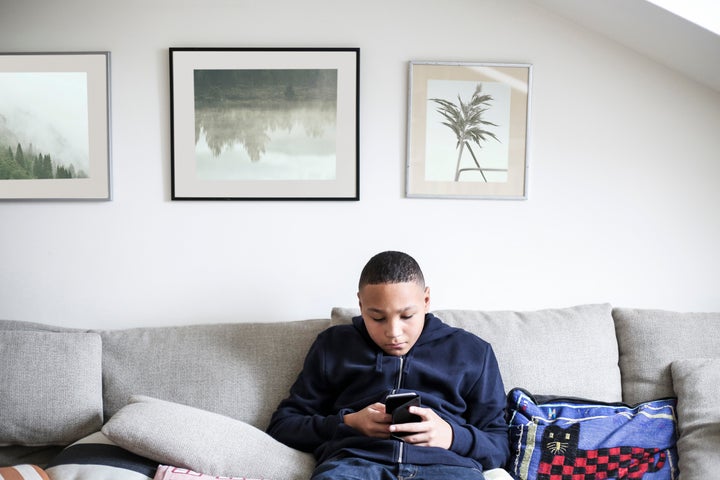
It may seem LGBTQ2S rights have come a long way, but even today queer and trans youth are put at risk by coming out to their families.
And with another cold winter on the way, now is a good time for a reminder of a sobering statistic: 25 to 40 per cent of homeless youth in Canada identify as LGBTQ2S.
In response to the tremendous vulnerabilities faced by young queer and trans people who have found themselves in precarious housing situations — whether that’s on the streets, in shelters, or couch surfing— a handful of supportive housing options have sprung up across the country.
The problem is, even though they’re desperately needed, they’re scarce. And that’s a major problem since experts say most homeless shelters are “unsafe” for LGBTQ2S youth.
WATCH: LGBTQ youth open up about homelessness. Story continues below.
“There are so many different levels of how these programs are unsafe for serving queer and trans youth, especially,” Alex Abramovich, a scientist at the Centre for Addiction & Mental Health (CAMH) and a University of Toronto assistant professor, told HuffPost Canada.
As parents trying to raise your kids in a supportive home environment, you might be wondering: how did we even get here?
Family rejection is a major reason
Family rejection is a primary reason for overall youth homelessness, which is particularly true for young sexual and gender minorities, according to Abramovich’s research.
“I would say pretty much all of the young people I’ve worked with have experienced identity-based family rejection,” he said.
“For the majority of youth, there has been years of family conflict, and coming out just put it over the edge.”
Ruth Brown, 21, of Calgary, told HuffPost Canada that they came out to their parents as queer three years ago. Brown (who uses both she/her and they/them pronouns) had been couch surfing at friends’ places because of family tension, but this consolidated the estrangement.
After their grandparents sent them a pamphlet for what Brown knew to be a “conversion camp” (where youth might be subjected to sexuality and gender change efforts that are abusive), they said, “it really hit me: They understood what I was trying to tell them, but although they understood, they weren’t accepting.”
Brown spent time in shelters, but didn’t feel they belonged there; in religious-based shelters, for instance, staff actually prayed over them as if their queerness was something to be fixed. Brown also saw how trans youth were treated, often told to sleep in the rooms that accorded with their assigned-sex-at-birth.
Most shelters aren’t set up for queer and trans youth
Most Canadian shelters and housing programs aren’t population-specific, nor do they have have specialized training, Abramovich explained.
Program design often erases trans identities through things like dorm set-up, washrooms, and intake paperwork. As well, gender-affirming medical care or supplies like chest binders may not be available.

Studies show that LGBTQ2S youth are likely subjected to homophobia or transphobia from other clients if they come out. If staff haven’t received cultural competency training, they’re less likely to recognize these risks.
Queer and trans youth of colour and Indigenous populations are most vulnerable to discrimination and abuse.
Many become part of the “hidden homeless”
When LGBTQ2S young people experience shelters as unsafe, many — like Ruth Brown — will become part of the “hidden homeless.” These young people are inadequately housed, usually crashing at friends’ places, and don’t access shelter services or supports.
In Canada, homelessness is measured by “point-in-time” counts done across the country. Abramovich said these don’t measure hidden homelessness, but LGBTQ2 youth are overrepresented in this category.

Youth also sleep on the streets to avoid the shelter system. Abramovich said the point-in-time counts have found higher numbers of gender and sexual minority youth within those populations, which increases risks to an already vulnerable population.
There are some supportive housing options
Some Canadian organizations are stepping up to fill the gaps for these young people. Sprott House is a transitional housing program in Toronto that has 25 beds. The 519, also in Toronto, offers services such as a weekly all ages drop-in for LGBTQ2 individuals who are under-housed as well as a weekly meal service for trans folks.
Calgary’s Aura offers up to 10 “host home” spots, provided by affirming host families for sexual and gender minority youth. Aura’s programs are also scaffolded so that youth can go from a host-home situation to supported independent living, and then come back as alumni to help new clients with system navigation and life skills.
Brown started at Aura three years ago; they’re now using the independent living supports, and volunteer for the Calgary Homeless Foundation. “I think one of the most important things to me as part of the LGBT community and being a person of colour as well, is that I’m making a difference for myself while I’m here,” Brown said.
Abramovich emphasizes, however, that there are far more LGBTQ2 youth than these kinds of programs can accommodate. And if youth have intersecting identities, safe spaces are even harder to find.
Ange Neil is a youth support worker for Aura, as well as a non-binary Indiegenous person. They told HuffPost that four out of five of their clients are racialized, and spoke to the unique challenges of Two Spirit individuals.
“There’s so much transphobia and homophobia because of residential schools and the sixties scoop,” Neil said.
Ultimately, Neil said, “We’re all hardwired for love and belonging” — a lack of these things can drive youth from their homes and alienate them from services. Neil encourages parents, social workers, teachers, and youth workers to consider their attitudes towards gender and sexual diversity.
“Are you celebrating or are you accepting? Because I think we can go deeper into the celebration of our young people.”
Also on HuffPost: